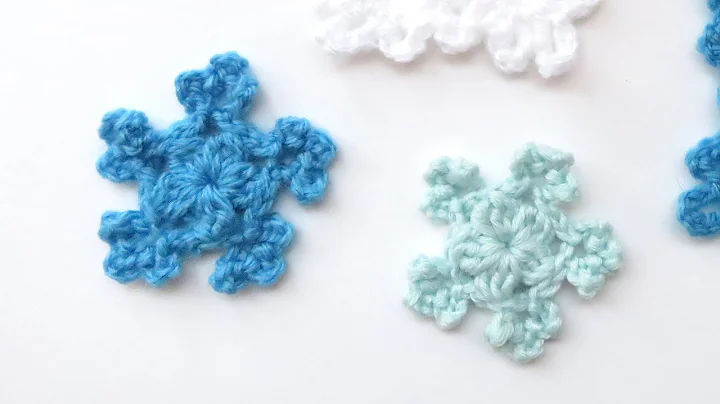Master the Front and Back Loop Only Crochet Technique
Table of Contents
- Introduction
- Learning the Slip Stitch
- Combination of Slip Stitch and Single Crochet
- Using the Front Loop or Back Loop
- Creating a Wavy Pattern
- Reversibility of the Design
- Materials Needed for the Project
- Starting the Square
- Adjusting the Size of the Square
- Making the First Row of Single Crochet
- Changing to Front Loop or Back Loop Only
- Creating the Wave Pattern
- Changing Loop Types for Each Row
- Finalizing the Square
- Designing Projects with Front Loop and Back Loop Single Crochet
- Conclusion
Learning to Use the Front Loop or Back Loop in Crochet
Crocheting is a versatile craft that allows for various techniques and stitch patterns to be incorporated into projects. In this tutorial, we will focus on learning how to use just the front loop or just the back loop of a stitch to create a unique and wavy pattern. By utilizing this technique, you can add texture and dimension to your crocheted items. Whether you're a beginner or an experienced crocheter, this tutorial will guide you step by step in mastering the front loop and back loop single crochet.
To begin, let's gather the materials needed for this project. You will require a basic acrylic yarn and a size H crochet hook. These materials are readily available and affordable, making it easy to embark on this new crochet adventure.
Once you have your materials ready, it's time to start creating your square. You have the option to adjust the size of your square, but for this tutorial, we'll aim for a 6-inch by 6-inch square. It's recommended to practice with a smaller size before working on the actual square to familiarize yourself with the technique.
To start, make a slip knot and insert your crochet hook. Begin by making a chain of 25 stitches. This may vary depending on the size of your square, but aim for a multiple of five stitches to maintain the pattern consistency.
After creating the chain, you'll proceed to make the first row of single crochet. In this row, you'll be working only in the one side loop of the stitch, which will make the process faster and more efficient. Remember to keep the tension consistent throughout to ensure uniformity in your stitches.
Now comes the exciting part - using just the front loop or just the back loop of the stitch to create the wavy pattern. On the subsequent rows, you'll alternate between using the front loop only and the back loop only. This alternating method will gradually build up the wave effect, adding visual interest to your crochet project.
As you continue working through the rows, you'll notice the pattern starting to emerge, with ridges formed by the stitches worked in the back loop. These ridges create a textured look on the right side of the fabric, giving it a unique and appealing appearance.
To maintain the consistency of the pattern, it's important to change loop types with each row. If you worked with the back loop on the previous row, switch to the front loop for the next row, and vice versa. This will ensure that the ridges stay on the same side of the fabric, creating a cohesive and visually pleasing design.
As you near the completion of your square, the full extent of the wavy pattern will become evident. It's normal for the square to curl and wave due to the nature of the pattern. This characteristic can be embraced and used to your advantage when designing projects such as cowls or blankets.
In addition to blankets, there are countless possibilities for incorporating the front loop and back loop single crochet into your crocheted creations. The unique texture and visual interest offered by this technique can be utilized to design beautiful scarves, bags, or even home decor items.
In conclusion, learning to use the front loop or back loop in crochet opens up a world of creativity and design possibilities. The wavy pattern created by alternating loop types adds a unique touch to your crochet projects, making them stand out from the crowd. So grab your yarn and crochet hook, and let your imagination run wild with this exciting crochet technique. Happy crocheting!
 WHY YOU SHOULD CHOOSE BEAUTYBADY
WHY YOU SHOULD CHOOSE BEAUTYBADY







